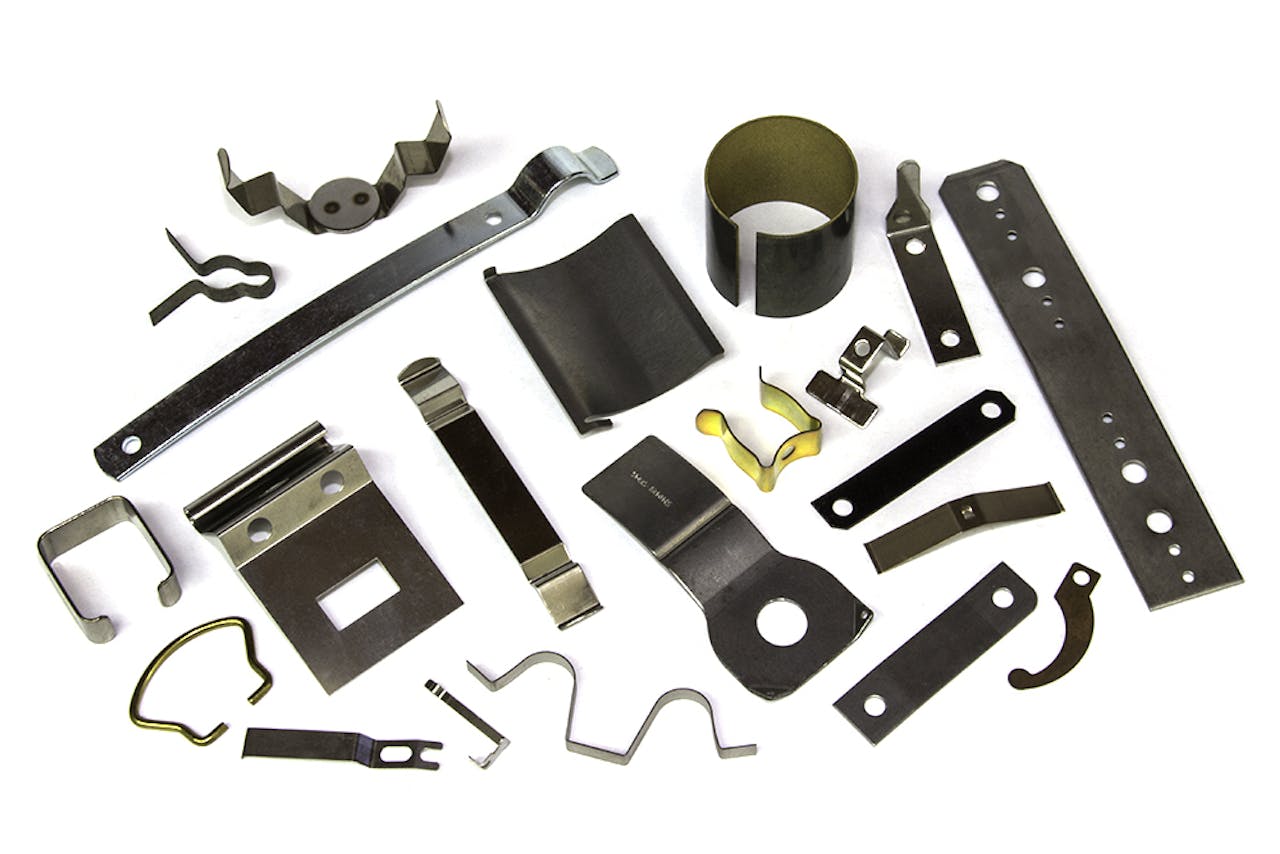Discover the most up to date Advancements in Metal Stamping for Accuracy Production
Discover the most up to date Advancements in Metal Stamping for Accuracy Production
Blog Article
Checking Out the Globe of Steel Stamping: From Layout to Manufacturing
Within the world of manufacturing, metal stamping stands apart as an accurate and reliable technique for shaping steel sheets right into various types with amazing consistency. From the first layout stage where detailed patterns form to the elaborate production processes, metal stamping is a blend of artistry and engineering. Looking into this globe introduces an intricate interaction of creative thinking and technological proficiency, using a glance right into a realm where advancement satisfies craftsmanship.
History of Metal Stamping
Steel marking, an extensively utilized manufacturing process today, has a rich background that goes back to ancient times (Metal Stamping). The origins of steel marking can be mapped to ancient worlds such as the Egyptians, who made use of marking methods to decorate jewelry and accessories with detailed styles. Gradually, metal marking progressed, with people like the Greeks and Romans utilizing it for creating coins and attractive products

In the 20th century, steel marking remained to evolve with the combination of automation and computer mathematical control (CNC) technology. These innovations additionally increased the performance and precision of steel stamping processes, making it an essential component of modern production across markets such as automotive, aerospace, and electronic devices. Today, steel stamping continues to be an important production process, integrating practice with advancement to fulfill the demands of a frequently evolving market.
Layout Considerations and Prototyping
When creating metal stamping jobs, meticulous interest to make considerations and prototyping is necessary for ensuring ideal production end results. Design considerations in steel marking consist of material choice, component geometry, tooling design, and production expediency. Selecting the appropriate material is essential as it affects the component's efficiency, expense, and manufacturability. Part geometry influences the intricacy of the marking process and the performance of the end product. Tooling design plays a significant duty in the success of steel marking projects, affecting part accuracy, tool long life, and manufacturing effectiveness.
Prototyping is an important stage in the metal stamping process that enables engineers to examine the design, validate manufacturability, and make essential modifications before full-blown production. Prototyping aids determine possible problems beforehand, conserving time and costs in the future. It additionally gives an opportunity to enhance the layout for performance and quality. By very carefully thinking about design facets and making use of prototyping, makers can enhance the metal marking process and achieve high-quality, cost-efficient manufacturing outcomes.
Tooling and Devices Basics
Thinking about the critical function that tooling layout plays in the success click here now of metal marking projects, comprehending the essential tools and tools required is vital for achieving efficient manufacturing end results. Tooling is a fundamental element of steel stamping, as it directly influences the high quality and uniformity of the final items. Essential tools include passes away, punches, and fixtures, which are custom-designed to form and form the steel right into the desired parts. Passes away are the main device used to cut and develop the steel, while strikes help produce openings or details forms. Fixtures hold the metal in position throughout the marking process, guaranteeing precision and repeatability. In addition, tools such as stamping presses, feeders, and coil handling systems are important for automating the marking procedure and raising productivity. Investing in top notch tooling and tools not just boosts manufacturing performance yet also brings about greater precision, minimized waste, and general expense financial savings in steel stamping operations.
Manufacturing Refine and Quality Assurance
Efficiently handling the manufacturing process and applying robust high quality control actions are vital for ensuring the success of metal marking projects. The production procedure in steel stamping includes a collection of steps that need to be carefully coordinated to accomplish optimal results.
Quality More Bonuses control in metal stamping is extremely important to deliver products that meet the needed specs. Evaluating the stamped components at numerous stages of manufacturing helps identify any problems early, protecting against pricey rework or scrap. Strategies such as dimensional examination, aesthetic examination, and product testing are commonly employed to ensure the quality of the stamped components. By keeping rigorous top quality control criteria, suppliers can promote their reputation for delivering top quality metal marked items.
Applications and Industry Insights
In the world of steel marking, the effective application of production processes and quality control steps directly influences the effectiveness and dependability of numerous industry applications have a peek here and supplies beneficial understandings right into the field's functional characteristics. In addition, steel marking promotes the manufacturing of numerous family home appliances, including refrigerators, washing devices, and ovens, by offering cost-effective options for making sturdy and intricate components. Recognizing the applications and sector understandings of metal stamping is important for optimizing manufacturing procedures and improving product high quality across different sectors.

Conclusion
In verdict, steel stamping has a rich background and plays a critical duty in different markets. Style considerations, prototyping, tooling, equipment, production processes, and top quality control are important elements of steel stamping. With its widespread applications and sector insights, metal stamping continues to be a flexible and reliable manufacturing procedure. By recognizing and making use of the principles of metal marking, makers can attain high-grade, accuracy parts for a selection of products.
Report this page